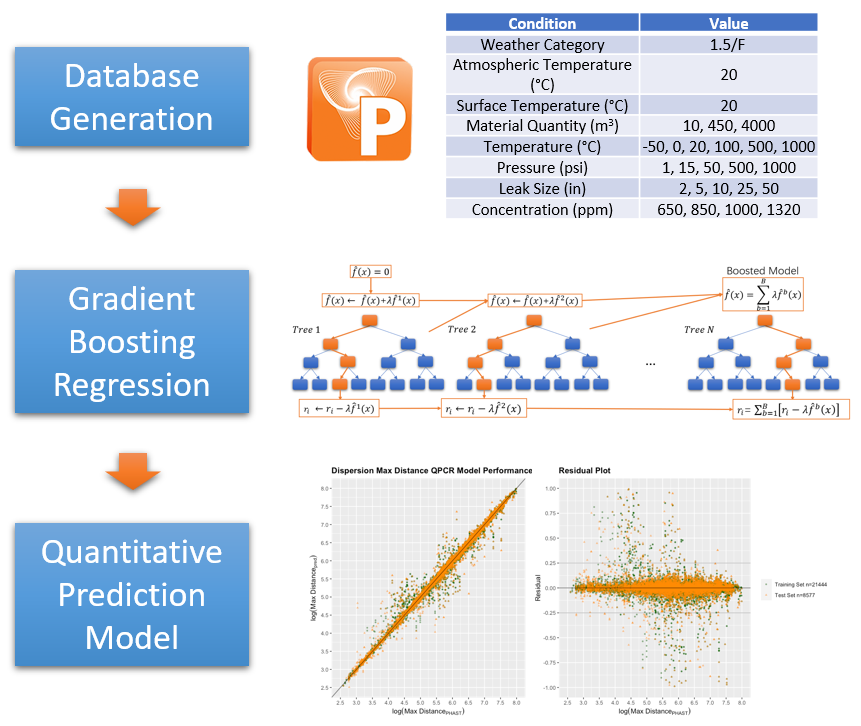(47c) Development of Toxic Dispersion Quantitative Property-Consequence Relationship (QPCR) Models Using Machine Learning
AIChE Annual Meeting
2020
2020 Virtual AIChE Annual Meeting
Environmental Division
Atmospheric Chemistry and Physics: Modeling and Field Studies
Monday, November 16, 2020 - 8:15am to 8:30am
Incidental release of toxic gases and liquids can lead to the formation of toxic vapor clouds which can be extremely detrimental to the surrounding environment and communities. In this study, a highly efficient consequence model is constructed to accurately predict the downwind maximum distance, minimum distance, and maximum vapor cloud width under different toxic concentrations. Toxic dispersion data of 450 leak scenarios of 19 common toxic chemicals were obtained using PHAST simulations. Gradient boosting algorithm was implemented to develop quantitative property-consequence relationship (QPCR) models. The coefficient of determination (R2) and root-mean-square error (RMSE) were calculated for statistical assessment and the developed QPCR models achieved satisfactory predictive capabilities. These developed QPCR models can be used to obtain instant toxic dispersion cloud range for chemicals for emergency response planning and risk assessment.


Checkout
This paper has an Extended Abstract file available; you must purchase the conference proceedings to access it.
Do you already own this?
Log In for instructions on accessing this content.
Pricing
Individuals
| AIChE Pro Members | $150.00 |
| AIChE Emeritus Members | $105.00 |
| AIChE Graduate Student Members | Free |
| AIChE Undergraduate Student Members | Free |
| AIChE Explorer Members | $225.00 |
| Non-Members | $225.00 |
